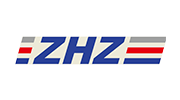About Power Supply
Answer: The power supply range of Viewpro gimbal is 3S~6S (12V~24V), except the special customized version (without the CONN board – main board of control box). Excessive high voltage and high voltage ignition when the power supply is not connected to the voltage regulator module will cause the gimbal burned out, and there will be no response when it is powered on.
Answer: Use a DC stabilized power supply to check if the current is 0 or not. 0mah means the power line is an open circuit, check whether the two ends of the line are well plugged in. If there is no DC power supply, use the voltage grade of the multimeter to test the voltage of the two power lines to the gimbal. If the voltage of the point is 0V, it means that the power line is an open circuit. Check whether the two ends of the line are well plugged in.
Case 1: Gimbal power supply is not enough
Answer: Make sure power supply is 3S~6S (12V~24V), make sure the power cable can support 2A electric current.
Case 2: Gimbal internal power problem
Answer: The internal power cable of the gimbal is pressed.
About Series Port TTL Connection
Answer:
(1) The PC needs to install the serial port driver. After connecting USB end to the PC, check the “Device Manager”-”Port”-”USB-SERIAL CH340 (COM x)” to confirm the correct COM port.
(2) If there is no “USB-SERIAL” icon, please install the serial port TTL driver.
(3) After installing the driver, connect the wire TX and RX of the cable together, use the serial port assistant to send data to check whether the serial port environment is normal or not. If it can receive what it just sent to itself, means the cable is normal.
Case 1: Use the provided USB to TTL cable, can control gimbal, but no feedback
Answer: Re-connect both ends of the cable and try again. If there is still no feedback, test the TX-RX of the cable itself (Re. 2.1 How to test the provided USB to TTL cable?). Check if the sent and received data is consistent or not to confirm if the cable is good or not. If the cable is normal, restart the gimbal, and try again. If it is still abnormal, it may be the wiring is an open circuit inside the gimbal. For standard version gimbal, re-connect the 15pin cable on control box. For Viewport version, re-connect the serial port wiring terminal and re-connect the Viewport.
Case 2: Standard version: The yellow jumper cap on the CONN board is off, can not control the gimbal (pitch and yaw), but the camera control (zoom and record) is normal.
A: Need to make short-circuit at the jumper cap position.
Case 3: Standard version: The gimbal is under S.Bus mode, meantime the serial port cannot communicate.
Answer: Follow the related instruction to recover serial port control.
Case 4: Gimbal can not communicate via TCP/TTL.
Answer: Test the gimbal by PWM control. If the camera cannot be controlled, and the program light on the CONN board does not flash, probably the CONN hardware is damaged, return to factory for repair.
Case 5: Standard version: Can control gimbal but not the camera
Answer: 1) Check if the software of the gimbal is match or not, e.g. the cameras (Z40K, Z-Fusion pro, Q30XIR) have 2 baud rates, need to pay attention to this point.
2) Check if the communication from camera RX to CONN board TX is OK or not. If not OK, need to repair.
3) If the communication from camera RX to CONN TX is OK, switch a CONN board of same model (if it’s available) to test, or remove the diode D20 on CONN board and test again.
4) If still not works after all above operations, probably the camera module is broken.
About Gimbal
Case 1: The gimbal roll axis hits the yaw motor and rolls randomly or no respond after powering on, or rotate randomly in all 3axis.
Answer:
(1) Connect to serial port, make sure it is well connected
(2) While turning on the camera, continuously send command “3E 1B 00 1B 00 00″ to turn off the motors, keep clicking (or set sending interval 500ms) until motor stop moving.
(3) Send command “3E 45 01 46 0B 0B 3E 1B 00 1B 00 00″, and wait for the automatic calibration of the gimbal to complete
(4) After calibration, adjust the horizontal position of the camera lens align to the installation arrow (you can move manually it to the desired position and wait for 2S), send command “3E 1A 00 1A 00 00″ to save this position (it’s also the home position and the position after power-on self-checking)
Case 2: After powering on, the gimbal pans randomly.
Answer:
(1) The image and data transmitter antenna on the drone interferes with the magnetic encoder of the gimbal. Turn off the transmitter to eliminate the interference and then judge accordingly. If the phenomenon disappears, adjust the position (preferably more 35cm away) or direction (not facing the direction of the gimbal) of the antenna.
(2) Eliminate the interference of the unstable power supply by supplying power to the gimbal independently, or adjusting the voltage (try both 3S and 6S power supply).
(3) Update the program of the CONN board/DJI version software/Viewport controlling software to solve the problem that the serial port is interfered when starting up and incorrectly sent commands. (Solution only for new gimbals that rotate randomly and repeat same issue even temporarily work normal after sending command to calibrate.)
(4) If all the above methods have been tried, the gimbal still rotates after the drone is powered on, indicating that the gimbal is subjected to electromagnetic interference, and the internal data got error, need to send it back to factory for anti-interference processing.
(5) Special case: gimbal rotates after working for a while with CAN, motors are burning hot,
Case 3: After powering on, the gimbal is normal. After a period of time, irregularly jerks or motionless and have a chirping sound
A: Caused by IIC error (The main board controlling chip is broken).
Case 4: Turn off the image & data link and turn on again, the gimbal motor rotates abnormally, and have a chirping sound
Answer: Have you ever disassembled or assembled the damping plate? This operation may cause this problem
Case 5: The gimbal motors not moves but has chirping sound after powering on.
Answer: Send: 3E 3d 00 3d 00 00 to query for the gimbal angle feedback, if all value of IMU are 0, means gimbal IMU abnormal. Check if the 5V output of gimbal control box is normal or not. If normal, check if the internal wiring of IMU is normal or not, or if the connector loose or not. If gimbal is IP only version, check if the slip ring is OK.
Answer: Manual feedback: angle value of each axis, zoom times of the camera, and infrequently used data (tracking offset, rangefinder distance, target position)
Automatic feedback: angle value of each axis and angular velocity (set the feedback mode, turn on the automatic feedback)
The system default automatic feedback structure: (not set the feedback mode)
typedef struct {
uint16_t timestamp
int16_t rollIMUangle
int16_t pitchIMUangle
int16_t yawIMUangle
int16_t rollTAGangle
int16_t pitchTAGangle
int16_t yawTAGangle
int16_t rollTAGspeed
int16_t pitchTAGspeed
int16_t yawTAGspeed
int16_t rollStatorRotorAngle
int16_t pitchStatorRotorAngle
int16_t yawStatorRotorAngle
} T_SbgcGimbalRealtimeDataCustomReq_full
Answer:
follow_yaw_disable (mode not to follow the pan of the drone): 3E 1F 06 25 01 1F 00 00 00 00 20
follow_yaw_enable (mode to follow the pan of the drone): 3E 1F 06 25 01 1F 01 00 00 00 21
query_follow_state (query current mode): 3E 40 02 42 01 1F 20
save gimbal settings (save, the mode of the next startup is the same as the save mode): 3E 20 00 20 00 00
Obtained from the query when starting up: 3E 1F 06 25 01 1F FF FF FF FF 1C (For accurate query, please send the mode command first)
Answer: Send command to stop: FF 01 0F 10 00 04 04 00 00 00 00 00 00 00 00 00 00 00 00 00 08
Case 1: Gimbal tracking, after exceeding the limit angle upwards, the gimbal will move downwards. This is normal.
Case 2: Gimbal (old shipment) under speed mode, it cannot be controlled after passing the YAW axis limit.
Case 3: If the gimbal (old shipment) is mounted upside-down and pitch down to the limit, it will cause the lens to face upwards.
1) How gimbal enter the scan mode?
Answer: Add script to gimbal tuning and run the script
Enter scan mode: 3E 45 01 46 1B 1B
Exit scan mode: 3E 45 01 46 1A 1A
2) Gimbal receive stop feedback
Answer: send command “AA 55 20 10 FF”, then turn on to enable.
Send: FF 01 0F 10 00 00 00 00 00 00 00 00 00 00 00 00 00 00 00 00
Receive: 3E 43 01 44 43 43
3) Gimbal goes over the target under tracking mode.
Answer: Send command: AA 55 28 50 FF AA 55 2B 50 FF
Case 1: Modify pitch/yaw angle control range by RC Control
Answer:
(1) Send command: 3E 15 00 15 00 00
(2) Get the feedback value
(3) After changing the corresponding bit, send the changed command to the gimbal (CS: Sum from 5th byte to last byte modulo 256)
For example: send: 3E 15 00 15 00 00
Feedback:3E 15 86 9B 00 64 0A 46 50 01 0E 64 0A 46 5A 00 0E 64 0A 46 6E 00 0E 64 00 00 D3 FF 2D 00 01 03 14 00 D3 FF 5A 00 01 03 1E 00 30 FD D0 02 01 03 1E 01 3C 00 01 00 00 00 00 37 0A 00 00 02 04 00 00 00 00 00 00 32 32 00 00 00 03 02 03 01 00 02 00 01 02 00 00 00 26 11 18 19 1B 00 07 04 03 C8 FB 22 FC 14 FB 8B 28 14 00 00 00 1E 1E 3C 00 00 00 00 00 00 00 00 00 00 00 05 07 0F 32 06 03 03 03 53 07 50 04 00 00 00 01 00 0B
Analysis on the feedback:
[
Frame header:3E 15 86 9B
Data body:
00 64 0A 46 50 01 0E 64 0A 46 5A 00 0E 64 0A 46 6E 00 0E 64 00 00 D3 FF 2D 00 01 03 14 00 D3 FF 5A 00 01 03 1E 00 30 FD D0 02 01 03 1E 01 3C 00 01 00 00 00 00 37 0A 00 00 02 04 00 00 00 00 00 00 32 32 00 00 00 03 02 03 01 00 02 00 01 02 00 00 00 26 11 18 19 1B 00 07 04 03 C8 FB 22 FC 14 FB 8B 28 14 00 00 00 1E 1E 3C 00 00 00 00 00 00 00 00 00 00 00 05 07 0F 32 06 03 03 03 53 07 50 04 00 00 00 01 00
Checksum:0B (Sum of each byte of the data body modulo 256)
]
In data body
(D3 FF 5A 00–>0xFFD3=-45 Pitch up 45° 0x005A=90° pitch down 90°, Up negative down positive)
(30 FD D0 02–>0xFD30=-720 Yaw left 720° 0x02D0=right720° Yaw right 720°, left negative right positive)
Write the modify value:
3E 16 86 9C 00 64 0A 46 50 01 0E 64 0A 46 5A 00 0E 64 0A 46 6E 00 0E 64 00 00 D3 FF 2D 00 01 03 14 00 xx xx xx xx 01 03 1E 00 xx xx xx xx 01 03 1E 01 3C 00 01 00 00 00 00 37 0A 00 00 02 04 00 00 00 00 00 00 32 32 00 00 00 03 02 03 01 00 02 00 01 02 00 00 00 26 11 18 19 1B 00 07 04 03 C8 FB 22 FC 14 FB 8B 28 14 00 00 00 1E 1E 3C 00 00 00 00 00 00 00 00 00 00 00 05 07 0F 32 06 03 03 03 53 07 50 04 00 00 00 01 00 CS
Case 2: Yaw encoder angle value setting
Answer:
Send:3E 3E 00 3E 00
Feedback:3E 3E 97 D5 00 00 01 9A 00 00 00 00 00 00 00 00 00 00 00 00 00 00 00 00 00 00 00 64 64 64 5F 5F 5F 14 00 00 00 00 00 00 DE FE 00 00 00 00 22 01 87 00 78 3C 00 00 00 00 00 00 58 02 88 13 32 00 00 00 00 00 00 32 32 32 14 14 14 3C 3C 3C 00 00 00 00 00 00 00 00 00 00 00 00 00 00 00 00 00 00 00 00 00 00 00 00 00 00 00 00 00 00 00 00 00 00 00 00 00 00 00 00 00 00 00 00 00 00 00 00 00 00 00 00 00 00 00 00 00 00 00 00 00 00 00 00 00 00 00 00 02 00 00 00 00 00 00 00 00 E1
Analyse:
00 00:roll
00 00:pitch
DE FE:yaw 0xFEDE–>-290
22 01:yaw 0×0122–> 290
Write the modify value:
Send: 3E 3F 97 D6 00 00 01 9A 00 00 00 00 00 00 00 00 00 00 00 00 00 00 00 00 00 00 00 64 64 64 5F 5F 5F 14 00 00 00 00 00 00 DE FE 00 00 00 00 22 01 87 00 78 3C 00 00 00 00 00 00 58 02 88 13 32 00 00 00 00 00 00 32 32 32 14 14 14 3C 3C 3C 00 00 00 00 00 00 00 00 00 00 00 00 00 00 00 00 00 00 00 00 00 00 00 00 00 00 00 00 00 00 00 00 00 00 00 00 00 00 00 00 00 00 00 00 00 00 00 00 00 00 00 00 00 00 00 00 00 00 00 00 00 00 00 00 00 00 00 00 02 00 00 00 00 00 00 00 00 E1
Case 3: Gimbal yaw does not follow or follow is too much sensitive.
Answer:
(1) Use the Mode channel of the remote control to switch quickly 4 times in a row (three-gear switch: middle gear –> high gear –> medium gear –> high gear –> medium gear –> high gear - -> Middle gear –> High gear) to see if it follows or not.
(2) Use Viewlink control software, serial port control, turn on “Enable Follow” to see if it follows or not.
(3) Use the command to query the parameters, after getting the feedback parameters, modify the corresponding parameters. Save the setting by sending: 3E 20 00 20 00.
Send: 3E 15 00 15 00 00
Feedback:3E 15 86 9B 00 64 0A 46 82 01 0E 64 0A 46 64 00 0E 64 0A 46 A0 00 0E 64 00 00 D3 FF 2D 00 01 03 14 00 D3 FF 5A 00 01 03 13 00 D4 FE 2C 01 01 03 13 01 3C 00 01 00 00 00 00 37 0A 00 00 02 04 03 00 00 00 00 00 32 32 00 00 00 FD FF 03 01 00 02 00 01 02 00 00 17 12 11 18 19 00 00 07 04 03 C8 FB 22 FC 14 FB 8B 28 14 00 00 00 1E 1E 3C 00 00 00 00 00 00 00 00 00 00 00 05 07 0F 32 06 03 03 03 51 07 10 44 00 00 00 01 00 43
32 : dead-band (increase this value to reduce the follow sensitivity)
32 : expo curve
1E 1E 3C: Follow SPEED
03 03 03: Follow LPF
Send:
3E 16 86 9C 00 64 0A 46 82 01 0E 64 0A 46 64 00 0E 64 0A 46 A0 00 0E 64 00 00 D3 FF 2D 00 01 03 14 00 D3 FF 5A 00 01 03 13 00 D4 FE 2C 01 01 03 13 01 3C 00 01 00 00 00 00 37 0A 00 00 02 04 03 00 00 00 00 00 64 3C 00 00 00 FD FF 03 01 00 02 00 01 02 00 00 17 12 11 18 19 00 00 07 04 03 C8 FB 22 FC 14 FB 8B 28 14 00 00 00 1E 1E 3C 00 00 00 00 00 00 00 00 00 00 00 05 07 0F 32 06 03 03 03 51 07 10 44 00 00 00 01 00 CS
Send: 3E 3E 00 3E 00 00
Feedback: 3E 3E 97 D5 00 00 01 9A 00 00 00 00 00 00 00 00 00 00 00 00 00 00 00 00 00 00 00 64 64 64 5F 5F 5F 14 00 00 00 00 00 00 DE FE 00 00 00 00 22 01 87 00 78 3C 00 00 00 00 00 00 58 02 88 13 32 00 00 00 00 00 00 32 32 32 14 14 14 3C 3C 3C 00 00 00 00 00 00 00 00 00 00 00 00 00 00 00 00 00 00 00 00 00 00 00 00 00 00 00 00 00 00 00 00 00 00 00 00 00 00 00 00 00 00 00 00 00 00 00 00 00 00 00 00 00 00 00 00 00 00 00 00 00 00 00 00 00 00 00 00 02 00 00 00 00 00 00 00 00 E1
3C 3C 3C: Follow RANGE
For example, send modification command: 3E 3F 97 D6 00 00 01 9A 00 00 00 00 00 00 00 00 00 00 00 00 00 00 00 00 00 00 00 64 64 64 5F 5F 5F 14 00 00 00 00 00 00 DE FE 00 00 00 00 22 01 87 00 78 3C 00 00 00 00 00 00 58 02 88 13 32 00 00 00 00 00 00 32 32 32 14 14 14 01 01 3C 00 00 00 00 00 00 00 00 00 00 00 00 00 00 00 00 00 00 00 00 00 00 00 00 00 00 00 00 00 00 00 00 00 00 00 00 00 00 00 00 00 00 00 00 00 00 00 00 00 00 00 00 00 00 00 00 00 00 00 00 00 00 00 00 00 00 00 00 02 00 00 00 00 00 00 00 00 CS
Answer:
(1) Send:3E 15 00 15 00 00 00
(2) Receive:3E 15 86 9B 00 64 0A 46 A0 01 0E 64 0A 46 8C 00 0E 64 0A 46 B4 00 0E 64 00 00 D3 FF 2D 00 01 03 14 00 D3 FF 5A 00 01 03 0B 00 D4 FE 2C 01 01 03 0B 01 3C 00 01 00 00 00 00 37 0A 00 00 02 04 03 00 00 00 00 00 32 32 00 00 00 01 03 FD FF 00 02 00 01 02 00 00 17 12 11 18 19 00 00 07 04 03 C8 FB 22 FC 14 FB 8B 28 14 00 00 00 1E 1E 1E 00 00 00 00 00 00 00 00 00 00 00 05 07 0F 32 06 03 03 03 51 07 10 44 00 00 00 01 00 6F
00 00: pitch initial angle is 0°
(3) If want to set pitch 45°,0×0800–> 2048 –>2048×0.02197265625=45
Send:3E 16 86 9C 00 64 0A 46 A0 01 0E 64 0A 46 8C 00 0E 64 0A 46 B4 00 0E 64 00 00 D3 FF 2D 00 01 03 14 00 D3 FF 5A 00 01 03 0B 00 D4 FE 2C 01 01 03 0B 01 3C 00 01 00 00 00 00 37 0A 00 00 02 04 03 00 00 00 00 00 32 32 00 00 00 01 03 FD FF 00 02 00 01 02 00 00 17 12 11 18 19 00 00 07 04 03 C8 FB 22 FC 14 FB 8B 28 14 00 00 00 1E 1E 1E 00 00 00 00 08 00 00 00 00 00 00 05 07 0F 32 06 03 03 03 51 07 10 44 00 00 00 01 00 77
(4) Send: 3E 20 00 20 00 to save the setting.
Answer:
(1) First send: 3E 15 00 15 00 00
(2) Get the return value
(3) After changing the corresponding bit, send the changed instruction to the gimbal (checksum: sum of all bits from 6th byte to the last byte modulo 256)
Such as: send: 3E 15 00 15 00 00
Receive:3E 15 86 9B 00 64 0A 46 50 01 0E 64 0A 46 5A 00 0E 64 0A 46 6E 00 0E 64 00 00 D3 FF 2D 00 01 03 14 00 D3 FF 5A 00 01 03 1E 00 30 FD D0 02 01 03 1E 01 3C 00 01 00 00 00 00 37 0A 00 00 02 04 00 00 00 00 00 00 32 32 00 00 00 03 02 03 01 00 02 00 01 02 00 00 00 26 11 18 19 1B 00 07 04 03 C8 FB 22 FC 14 FB 8B 28 14 00 00 00 1E 1E 3C 00 00 00 00 00 00 00 00 00 00 00 05 07 0F 32 06 03 03 03 53 07 50 04 00 00 00 01 00 0B
Analysis of received instructions:
01:speed mode –>changed to 02:angle mode
37:RC_DEADBAND –>changed to 00
0A:RC_EXPO_RATE –>changed to 00
Write the modify value:
Send:3E 16 86 9C 00 64 0A 46 50 01 0E 64 0A 46 5A 00 0E 64 0A 46 6E 00 0E 64 00 00 D3 FF 2D 00 02 03 14 00 D3 FF 5A 00 02 03 1E 00 30 FD D0 02 02 03 1E 01 3C 00 01 00 00 00 00 00 00 00 00 02 04 00 00 00 00 00 00 32 32 00 00 00 03 02 03 01 00 02 00 01 02 00 00 00 26 11 18 19 1B 00 07 04 03 C8 FB 22 FC 14 FB 8B 28 14 00 00 00 1E 1E 3C 00 00 00 00 00 00 00 00 00 00 00 05 07 0F 32 06 03 03 03 53 07 50 04 00 00 00 01 00 CD
Answer:
(1) Get the PID parameters of gimbal roll, pitch and yaw
Send: 3E 40 04 44 03 09 0A 0B 21
Feedback example: (POWER_ROLL=75, POWER_PITCH=75, POWER_YAW=115)
3E 1F 10 2F 03 09 4b 00 00 00 0a 4b 00 00 00 0b 73 00 00 00 2a
Frame header:3E 1F 10 2F
Data body:03 09 4b 00 00 00 0a 4b 00 00 00 0b 73 00 00 00
Checksum: 2a
Parameter NAME
| ID
| TYPE
| MIN
| MAX
|
POWER_ROLL | 9 |
1u |
0 |
255 |
POWER_PITCH | 10 | |||
POWER_YAW | 11 |
(2) Set the motor value of roll, pitch and yaw
(POWER_ROLL=75, POWER_PITCH=100, POWER_YAW=115)
Such as send:3E 1f 10 2F 03 09 4b 00 00 00 0a 64 00 00 00 0b 73 00 00 00 43 (The last bit is sum of red bits modulo 256)
(3)Save the settings from the previous step
send:3E 20 00 20 00
Answer:
(1) Get the gimbal roll, pitch, yaw PID parameters
Send: 3E 40 0A 4A 09 00 01 02 06 07 08 2A 2B 2C A2
Feedback example:
3E 1F 2E 4D
09
00 64 00 00 00———-ROLL P= 100
01 64 00 00 00———-PITCH P=100
02 78 00 00 00———YAW P=120
06 46 00 00 00 ———R D= 70
07 46 00 00 00———P D=70
08 64 00 00 00———Y D=70
2A 5F 00 00 00———R G=2
2B 5F 00 00 00———P G=2
2C 5F 00 00 00———Y G=2
EF—- checksum = LSB of all blue bytes
GAIN = 0.1 + X * 0.02 X=50*gain -5 2 = 0.1 + 95* 0.02
(2) Write the modification command
Such as send: 3E 1F 2E 4D 09 00 64 00 00 00 01 64 00 00 00 02 78 00 00 00 06 46 00 00 00 07 46 00 00 00 08 64 00 00 00 2A 5F 00 00 00 2B 5F 00 00 00 2C 5F 00 00 00 EF
(3) Save the settings of the 2nd step
Send: 3E 20 00 20 00
Answer:
(1) Send: 3E 21 00 21 00 00 to get value
(2) Write modified value
(3) Send: 3E 20 00 20 00 to save setting.
Example:
Send: 3E 21 00 21 00 00
Receive: 3E 21 68 89 00 23 23 37 1E 14 14 00 0C 3B 00 04 05 00 1D 1F 00 02 05 00 00 00 00 00 00 00 00 00 B6 C8 B0 20 34 FD 54 02 71 F9 1A 03 00 C8 C8 00 00 00 00 00 00 00 00 32 00 00 00 00 01 00 01 00 01 00 00 00 00 00 00 14 14 14 00 FB F6 64 FE 14 28 0D 04 0E 04 E4 03 0B 08 0D 07 07 00 32 32 32 00 00 00 03 01 32 00 14 00 14 14 14 96
54 02: 0×0254 Roll encoder value
71 F9: 0xF971 Pith encoder value
1A 03: 0x031A Yaw encoder value
B6 C8: 0xC8B6 Roll home position
B0 20: 0x20B0 Pitch home position
34 FD: 0xFD34 Yaw home position
Write the corresponding command:
Send: 3E 22 68 8A 00 23 23 37 1E 14 14 00 0C 3B 00 04 05 00 1D 1F 00 02 05 00 00 00 00 00 00 00 00 00 B6 C8 B0 20 34 FD 54 02 71 F9 21 03 00 C8 C8 00 00 00 00 00 00 00 00 32 00 00 00 00 01 00 01 00 01 00 00 00 00 00 00 14 14 14 00 FB F6 64 FE 14 28 0D 04 0E 04 E4 03 0B 08 0D 07 07 00 32 32 32 00 00 00 03 01 32 00 14 00 14 14 14 9D
Answer:
(1) Check the stability of the gimbal when powered off, ensure the balance of each axis.
(2) Check the mounting method, the type of damping balls, whether they are too less or too many, whether they are aged, and whether the damping plate has been modified.
(3) Check whether the external wiring of the gimbal is pulled tightly to the gimbal.
(4) Modify the gimbal PID parameters.
Case 1: Some frame header “AA…” / ”55 AA…” / “7E 7E…” not in gimbal protocol file are sent which caused analysis error and gimbal no respond.
Answer: Change the frame header of non gimbal protocol, could not be similar.
Case 2: Some invalid data are sent via serial port to the gimbal cause the gimbal serial port no respond.
Answer: Modify software: Reduce serial port voltage when power on, or delay the startup of the serial port.











